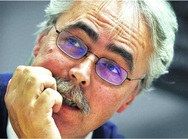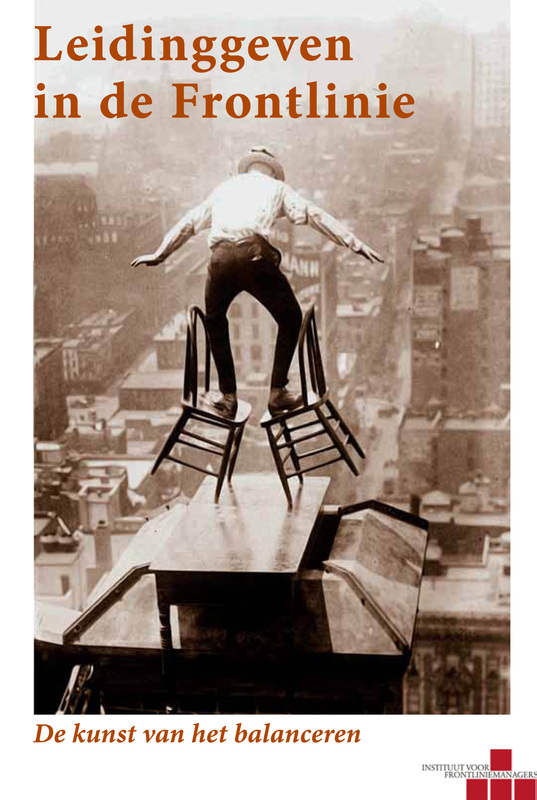|
Olivier Bommel laat ons zien dat Leiderschap weinig te maken heeft met met allerlei 'heldhaftige' eigenaardigheden, schitterende competenties en good habits a la Covey. Onze beeldvorming over wat een goede leider is, is volledig uit de hand gelopen. We hebben er een soort modern hero van gemaakt. Helaas pindakaas, de werkelijkheid is anders! Kijk nuchter naar leiders en constateer dat het geen modern hero’s zijn en dat ze het ook nooit worden. Gewone, doodordinaire mensen met een rugzak vol competenties en incompetenties. Soms bekwaam, heel vaak onbekwaam. Niets mis mee. En als je dan toch de behoefte hebt om ‘the difference which is the difference’ van leiders te benoemen, zoek het dan juist in die incompetenties en onbekwaamheden van leiders. Het klinkt misschien vreemd, maar juist het hanteren van de eigen onkunde en tekortkomingen in kennis en vermogens is misschien wel de belangrijkste competentie van een leidinggever.
Onderstaand een artikel waarin deze conclusie wordt bevestigd: The best bosses lead by failing! Humble leaders who embrace their failures are more effective and better liked, according to a new study. “Leaders of all ranks view admitting mistakes, spotlighting follower strengths, and modeling teachability as being at the core of humble leadership,” says Bradley Owens, assistant professor of organization and human resources at the University at Buffalo.“And they view these three behaviors as being powerful predictors of their own as well as the organization’s growth.” Owens and co-author David Hekman, assistant professor of management at the University of Wisconsin-Milwaukee, asked 16 CEOs, 20 mid-level leaders, and 19 front-line leaders to describe in detail how humble leaders operate in the workplace and how a humble leader behaves differently than a non-humble leader. Although the leaders were from vastly different organizations—military, manufacturing, health care, financial services, retailing, and religious—they all agreed that the essence of leader humility involves modeling to followers how to grow. “Growing and learning often involves failure and can be embarrassing,” says Owens. “But leaders who can overcome their fears and broadcast their feelings as they work through the messy internal growth process will be viewed more favorably by their followers. They also will legitimize their followers’ own growth journeys and will have higher-performing organizations.” Such leaders model how to be effectively human rather than superhuman and legitimize “becoming” rather than“pretending,”but some humble leaders are more effective than others, according to the study, which will be published in the Academy of Management Journal. Humble leaders who were young, nonwhite, or female were reported as having to constantly prove their competence to followers, making their humble behaviors both more expected and less valued. However, humble leaders who were experienced white males were reported as reaping large benefits from humbly admitting mistakes, praising followers, and trying to learn. In contrast, female leaders often feel they are expected to show more humility than their male counterparts, but then they have their competence called into question when they do show humility. “Our results suggest that female leaders often experience a ‘double bind,’” Owens says.“They are expected to be strong leaders and humble females at the same time.” Leaders who want to grow are able to signal to followers that learning, growth, mistakes, uncertainty, and false starts are normal and expected in the workplace, and this produces followers and entire organizations that constantly keep growing and improving. A follow-up study that is forthcoming in Organization Science using data from more than 700 employees and 218 leaders confirms that leader humility is associated with more learning-oriented teams,more engaged employees, and lower voluntary employee turnover.
0 Comments
|
Visit also
|
||||||
| leidingeven-lr.pdf | |
| File Size: | 765 kb |
| File Type: | |
Archives
December 2021
September 2021
February 2019
June 2018
November 2017
October 2017
January 2016
December 2015
June 2015
February 2015
November 2014
October 2014
February 2014
January 2014
October 2013
September 2013
July 2013
May 2013
March 2013
February 2013
October 2012
July 2012
May 2012
April 2012
March 2012
February 2012
December 2011
October 2011
September 2011
April 2011
February 2011
January 2011
December 2010



